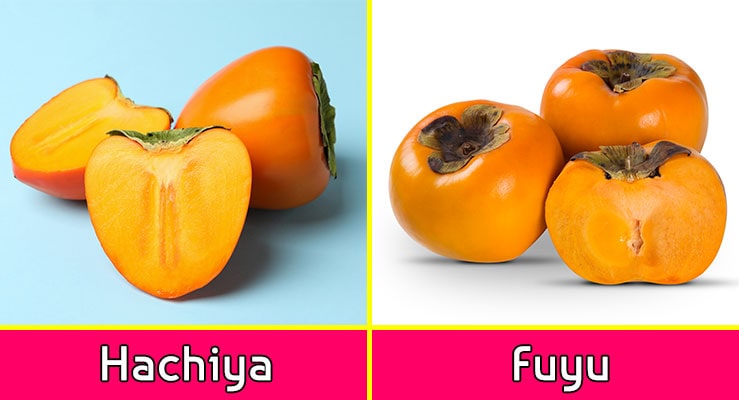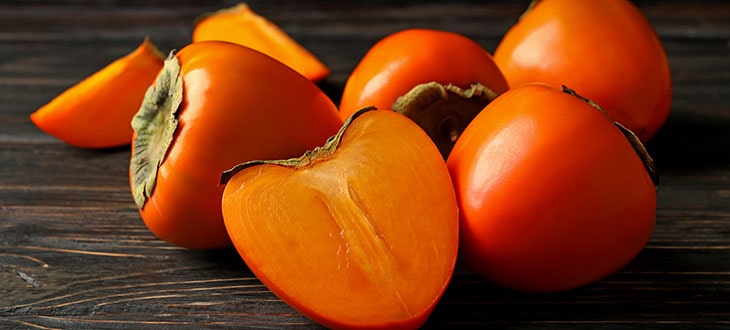Persimmons: The Sweet Fruits That Look Like Tomatoes
Ever tried persimmons? Yes, those orange fruits that look like tomatoes and appear during the fall on supermarkets’ shelves. Find out the benefits of consuming these fruits and how you can grow your own.
Persimmons are the fruit of several species of trees in the genus Diospyros. While they are usually known as persimmons in the US, they are also commonly called khaki, caqui, Fuyu, Chinese persimmon, Chinese Plum, and Sharon fruit in other regions of the world.
Persimmons were first grown in China, but many varieties are now cultivated in Japan and other parts of Asia. Still, China is accounted to produce more than 70% of the world’s persimmons.
Although persimmons look very much like tomatoes, these two are absolutely not related. Apart from their similar appearance on the outside, the similarities between tomatoes and persimmons end here.
Unlike tomatoes, which grow in vines, persimmons grow in trees. They are green in their development stage and their skin turns yellow and dark-orange (to almost red in some species) when the fruits ripen.
Contents
Persimmon Types
There are also two types of persimmons: astringent and non-astringent.
Astringent persimmons carry high levels of tannins and cannot be eaten before ripening because they will give your mouth a very dry, and puckering feel and don’t taste good. It is also not advisable to try eating these fruits before they are ripe. Apart from the risk of choking, the high concentration of tannins of the raw fruits can cause digestive problems.
You know that a persimmon from an astringent species is fully ripen when its peel get a dark orange color and when it feels a bit mushy at touch.
Non-astringent persimmons are edible even when not fully ripe as they contain a reduced level of tannins compared to the astringent varieties.
While multiple Diospyros trees produce these fruits, the two most common species of persimmons are Hachiya (astringent) and Fuyu (non-astringent).
Hachiya has a heart-like shape, while Fuyu has a slightly flattened shape and looks more like a tomato.

How To Eat Persimmon
Persimmons have a unique taste and if the fruit is well-ripened, then it should be very sweet. While some describe it as similar to mango, peach, or honey-like, I would say that persimmons have a slight flavor of raw pumpkin pulp but way sweeter.
Persimmon can be eaten raw, sliced in fruit salads, in jams, or cooked.
The peel is also edible. However, Hachiya may keep a bit of the astringency even when the fruit is completely ripe. Also, it is not advisable to consume it in excess. There have been medical cases when the fibers in the persimmon’s skin became insoluble in the stomach and caused what is known as a bezoar.
The core of a ripe persimmon fruit is orange, slightly gelatinous, succulent, and has no seeds if the tree has not been pollinated (the fruits found in supermarkets are usually seedless). It is contained by a thin peel, which is a bit tougher than an apple’s.
Is Persimmon Good For You?
Persimmons are not only delicious fruits but are also good for your health.
One persimmon fruit contains plenty of important vitamins and minerals, including important antioxidants that can prevent heart diseases and cancer. Due to its high vitamin C content, the consumption of persimmons helps to strengthen the immune system.
It is richer in potassium than bananas, and studies have shown that it has twice as much fiber as apples. These fruits also carry a very low amount of fats. According to the data provided by the U.S. Department Of Agriculture, 100 grams of raw persimmon, contains:
| Name | Per 100g |
|---|---|
| Calories | 70 kcal |
| Protein | 0.58 g |
| Fiber, total dietary | 3.6 g |
| Fat | 0.19 g |
| Carbohydrate | 18.59 g |
| Sugars | 12.53 g |
| Iron | 0.15 mg |
| Calcium | 8 mg |
| Potassium | 161 mg |
| Phosphorus | 17 mg |
| Magnesium | 9 mg |
| Vitamin C | 7.5 mg |
| Vitamin A, RAE | 81 µg |
| Carotene, beta | 253 µg |
| Sodium | 1 mg |
| Vitamin B-6 | 0.1 mg |
For the complete list of vitamins, minerals, and other compounds, see FoodData Central.
How To Grow Persimmons
If you wish to grow your own persimmons, you can do that. However, there are a few additional things you need to know for the operation to succeed.
First of all, you need to know that persimmons need several years before producing fruits, usually between 3 and 5 years. However, this waiting period should be well worth it because these trees have a long lifespan (about 60 years), and you will enjoy these delicious fruits year after year when the tree starts to bear fruits.

Secondly, you need to know that persimmons thrive in warm regions with temperate and subtropical climates.
Not many species can withstand winters with temperatures below freezing, but recently more hybrid species with improved cold tolerance have appeared. A good example is Fuyu (Jiro), which can withstand colder temperatures of about 5°F (-15°C).
There are also species that can resist even lower temperatures. So, choosing the right species for your climate is essential.
You can grow persimmons either by seedlings purchased from authorized nurseries or by seeds. Yet, the second approach involves a lengthy process and care.
In terms of the best soil, persimmons need well-drained humus-rich fertile soils. Those that retain too much moisture should be avoided. The optimal soil pH is between the 5.5-6.5 range.
These trees love sunlight, so it is best that they be planted in the open field, where they can get plenty of light.
Final Word
Persimmons are amazing fruits. They are not only sweet and delicious but are also a source of essential vitamins and minerals.
The harvesting season of persimmons usually starts in September and lasts until late November. That’s also the timeframe when you’ll most often find these fruits in supermarkets.
If you love these fruits and you wish to enjoy them fresh and for a long time, you can try growing your own persimmon trees if you live in a warm climate.
Besides their fruits, some species of persimmons are also often utilized as ornamental trees.
Even though persimmons are very similar in appearance to tomatoes, there is absolutely no connection between them.
If you found an unknown plant that produces tomato-like fruits and need help identifying it, take a look at our list of 10 plants with fruits that look like tomatoes.

